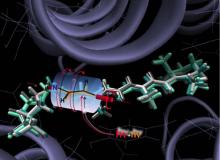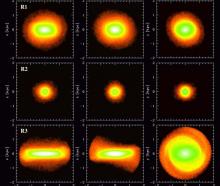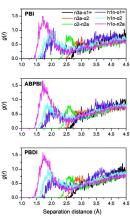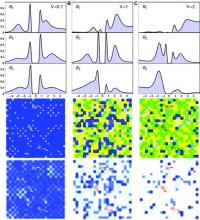Energy/Chemical
While at DuPont Chemical Company, Charles Kettering, from Loudonville, was responsible for Freon, used in refrigeration and air conditioning systems. Roy J. Plunkett, from New Carlisle, discovered Teflon in 1938. Today, along with DuPont, many companies along the energy supply chain have made their homes in the Buckeye State.
Humanic leverages OSC cycles, storage to study supercollider data
In huge tunnels below the Swiss-Franco border, the European Organization for Nuclear Research's Large Hadron Collider (LHC) is operating at half of its peak energy goal of 14 TeV or 'teraelectronvolts.' With the assistance of detectors built into the collider, physicists are searching for answers to questions about the birth of the universe, the existence of alternate dimensions and other key f
Durand augmenting water depth readings with data assimilation
Slated for launch in 2019-20, the Surface Water and Ocean Topo-graphy (SWOT) satellite mission is a collaborative project of NASA and the French space agency, Centre National d’Etudes Spatiales. SWOT features a swath-mapping radar interferometer that will provide data on inland bodies of water, as well as mapping ocean circulation at high spatial resolution.
Chen developing improved turbomachinery simulation software
Turbomachinery, such as that found in compressors and turbines, is instrumental in today's aeronautic, automotive, marine, space and industrial power generation. To achieve the most efficient propulsion and power systems, engine designers must understand the physics of very complex air-flow fields produced within multiple stages of constantly rotating rotors and stators.
Fried, Li model proton transfer to improve fuel cell performance
The overarching driver for the development of fuel-cell power is its potential to provide clean, highly efficient power generation. A fuel cell produces electricity from fuel (on the anode side) and an oxidant (on the cathode side), which react in the presence of electrolytes, substances containing free ions that make the substance electrically conductive.
CAR’s Rizzoni: Simulations help to lift streamliner toward 400-mph goal
A team of engineering students at The Ohio State University’s (OSU) Center for Automotive Research (CAR) recently began running aerodynamics simulations, one of the first steps in the complex process of designing, building and racing the fourth iteration of their record-breaking, alternative-fuel streamliner.
Lacks increasing fundamental understanding of disordered systems
Over time, the properties of polymer materials slowly change through a process known as aging. Aging can cause changes in volume, which may lead to cracks in a material, and alter mechanical properties, making it more brittle. Thus, aging can seriously impact the performance of polymer products used in a wide range of applications.
Amar’s approach speeds computer simulations of thin film growth
Thin films are used in industry to create a variety of products, such as semiconductors, optical coatings, pharmaceuticals and solar cells. A new mathematical approach developed by Jacques Amar, Ph.D., professor of physics at the University of Toledo, accelerates some complex computer calculations used to simulate the formation of micro-thin materials.









